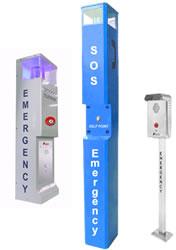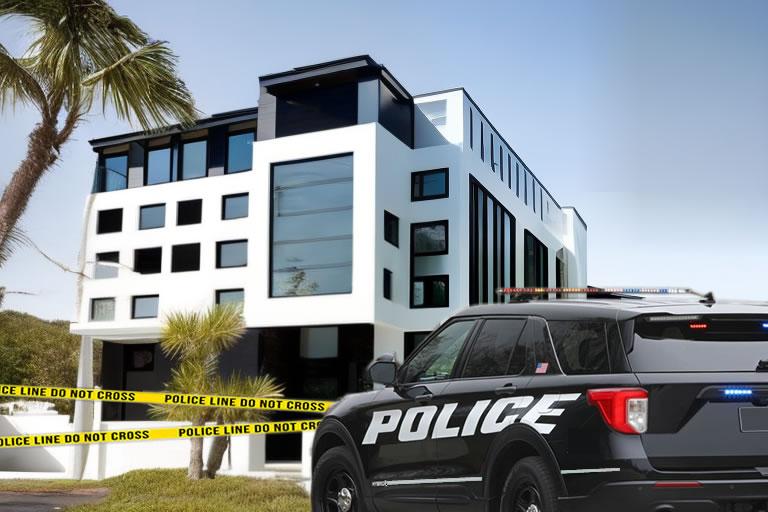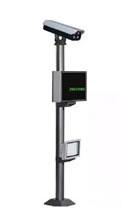Boost Campus Safety with 12 Positive Campus Safety Tips
Elevate security on your campus with 12 actionable Campus Safety Tips. Create a safer environment for all. Discover essential safety strategies today.
Ensuring Campus Safety: Essential Campus Safety Tips for Facility Managers
As dedicated facility managers, your role transcends physical upkeep; it encompasses the guardianship of campus safety. Safeguarding the learning environment through a blend of campus safety tips and innovative solutions like MyLinkLine cellular phone lines is paramount. In this comprehensive guide, we will delve into a range of strategies and practices that facility managers can adopt to ensure campus safety.
Collaborate with Security Teams
Effective collaboration between facility management and campus security personnel sets the stage for a robust safety framework. Regular meetings facilitate the alignment of safety protocols and emergency response plans. Collaborating closely with security teams enables the identification of potential risks, the formulation of preventive measures, and the establishment of seamless communication channels during incidents. This collaborative synergy fosters a proactive security stance that resonates across the campus community.
Stay Abreast of Campus Safety Tips and Trends
Staying informed about emerging safety trends, cutting-edge technologies, and evolving regulations is imperative. Participating in seminars, workshops, and conferences centered around campus safety empowers you with knowledge to navigate the ever-changing landscape effectively. Staying attuned to the latest campus safety tips equips you to adapt strategies to address new challenges proactively, ensuring that your safety measures remain efficacious and up-to-date.
Cost Saving Tip “Switching Your Existing Conventional Phone Landlines to Cellular”
Elevator Phones | Area of Refuse Phones | Pool Emergency Phones | Campus Emergency Phones
MyLinkLine’s cellular technology introduces a forward-thinking approach to campus safety communication. Replacing traditional landlines with cellular phone lines guarantees uninterrupted communication during emergencies, regardless of landline disruptions. Cellular networks remain operational during power outages and adverse weather, ensuring constant communication channels.

Cost Savings of 35% or More!
The transition to MyLinkLine cellular phone lines offers substantial cost savings. Traditional landline services often entail high monthly expenses that strain budgets over time. Cellular services are known for their cost-efficiency and adaptability. This transition significantly reduces monthly communication expenses while maintaining a dependable safety communication network.
Streamlined Installation and Maintenance
MyLinkLine’s cellular phone lines streamline installation and maintenance. Moreover, cellular lines eliminate the need for dedicated landline infrastructure, further reducing associated maintenance costs and complexities.
Enhanced Flexibility and Scalability
Campus dynamics evolve, influencing communication needs. MyLinkLine’s cellular phone lines adapt seamlessly to campus growth, whether through expansions, facility upgrades, or communication point adjustments. This flexibility eliminates the constraints of traditional landline infrastructure.
Conduct Regular Safety Audits
Conducting periodic safety audits serves as a cornerstone for identifying potential hazards and vulnerabilities on campus. These comprehensive audits encompass buildings, outdoor areas, parking lots, and access points. Evaluating the quality of lighting, signage, emergency exits, fire suppression systems, and other pivotal components is essential. Swiftly addressing identified gaps demonstrates a commitment to proactive risk management and a culture of safety campus-wide.
Develop an Active Shooter Plan
Conducting periodic safety audits serves as a cornerstone for identifying potential hazards and vulnerabilities on campus. Regrettably, active shooter incidents have become all too common. Crafting a comprehensive active shooter plan is a critical step in securing the campus community. Collaborate with security professionals to create a clear protocol for responding to active shooter incidents.

This plan should encompass notifying authorities, sheltering in place, evacuating, and providing occupants with guidance to stay safe. Conducting regular drills familiarizes the community with the plan, ensuring a coordinated response in the event of an active shooter situation. This proactive measure underscores your commitment to preparedness and safety.

Implement Access Control Measures
Campus Safety Tips: Managing access to campus facilities is pivotal for security enhancement. Utilizing access control systems, such as key cards, biometric entry systems, or electronic locks, limits unauthorized entry and bolsters security. Customize access permissions based on roles and responsibilities, and consistently review access logs to detect anomalies.
These measures not only fortify security but also provide invaluable data for analyzing movement patterns, aiding both emergency response planning and daily operations.
Secure and Monitor Perimeters
Safeguarding the campus perimeter is crucial for preventing unauthorized access. Deploy robust fencing, gates, and surveillance cameras strategically to delineate clear boundaries. Surveillance cameras at entrances, exits, high-traffic zones, and crucial points not only monitor activities but also provide crucial evidence in the event of incidents, aiding law enforcement and security personnel in their investigations.

Maintain Adequate Lighting
Campus Safety Tips: Adequate lighting significantly enhances safety. Well-lit areas improve visibility, deter criminal activities, and minimize accidents. Ensuring well-lit pathways, parking lots, building entrances, and communal spaces, even during the night, is pivotal. Regularly inspect lighting fixtures, promptly replace burnt-out bulbs, and consider motion-sensor lighting in low-traffic areas. Effective lighting fosters a sense of security and reassurance among occupants.

Train Staff and Conduct Safety Drills
Empowering staff and occupants with knowledge and skills to respond adeptly to emergencies is indispensable. Regular training sessions and safety drills encompass a range of scenarios, including evacuation procedures, shelter-in-place protocols, and responses to natural disasters.
Conducting regular drills familiarizes occupants with correct procedures, nurtures a culture of preparedness, and ensures swift, confident responses during critical situations. These efforts invest in building a capable, responsive campus community.
Maintain Emergency Communication Systems
Campus Safety Tips: In emergencies, effective communication is paramount. Ensure that emergency communication systems, including emergency call boxes, alarms, and notification systems, remain well-maintained and routinely tested. Implement a comprehensive mass notification system that swiftly disseminates crucial information through diverse channels, such as text messages, emails, and public address systems.
An efficient communication system ensures vital information reaches stakeholders promptly, enabling timely responses during emergencies.
Address Cybersecurity Concerns
Campus Safety Tip: Modern campus safety extends beyond physical spaces into the digital realm. Safeguarding sensitive data and digital infrastructure is pivotal. Implement robust cybersecurity measures to protect personal information, intellectual property, and institutional data. Regular software and operating system updates mitigate vulnerabilities.
Educate staff about cybersecurity threats like phishing, and maintain secure networks to prevent cyberattacks that could compromise personal and institutional information.
Foster a Culture of Safety
Cultivating a safety-oriented culture creates an environment where everyone contributes to security. Campus Safety Tips: Encourage individuals to promptly report suspicious activities, hazards, or security breaches. Establish clear reporting channels, including anonymous options, to ensure comfort in sharing concerns. This culture educates and empowers the campus community, actively contributing to a secure, harmonious environment.
Continuously Enhance Emergency Response Plans
Emergency response plans are living documents that demand continuous improvement. Regularly review and update plans based on safety drill insights, actual incidents, and stakeholder feedback. This iterative process ensures plans remain relevant, enabling swift, organized responses during emergencies while integrating lessons from past experiences.
Continuously Enhance Emergency Response Plans
Emergency response plans are living documents that demand continuous improvement. Regularly review and update plans based on safety drill insights, actual incidents, and stakeholder feedback. This iterative process ensures plans remain relevant, enabling swift, organized responses during emergencies while integrating lessons from past experiences.
Campus Safety Tips: Final Thoughts
In conclusion, effective campus safety requires a holistic approach, combining collaboration, staying informed, audits, training, innovations, and continual improvement. By nurturing a safety culture, embracing technological advancements, and adhering to best practices, you create a secure, thriving environment for the campus community.
Your efforts ensure safety, contribute to institutional success, and underscore the commitment to a secure, harmonious campus. With meticulous planning, vigilance, and advanced solutions such as MyLinkLine, you have the power to cultivate a safer, more resilient campus for all.

